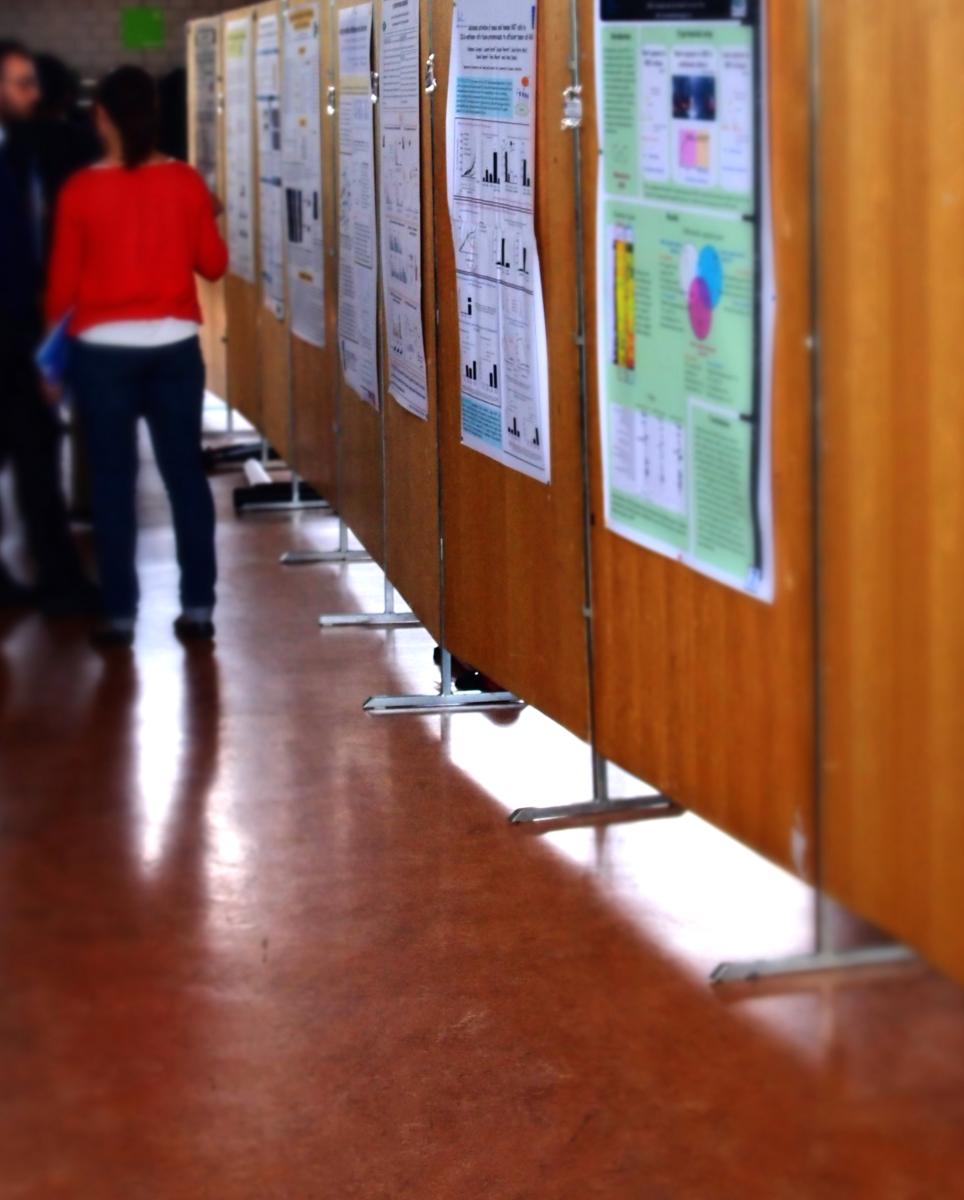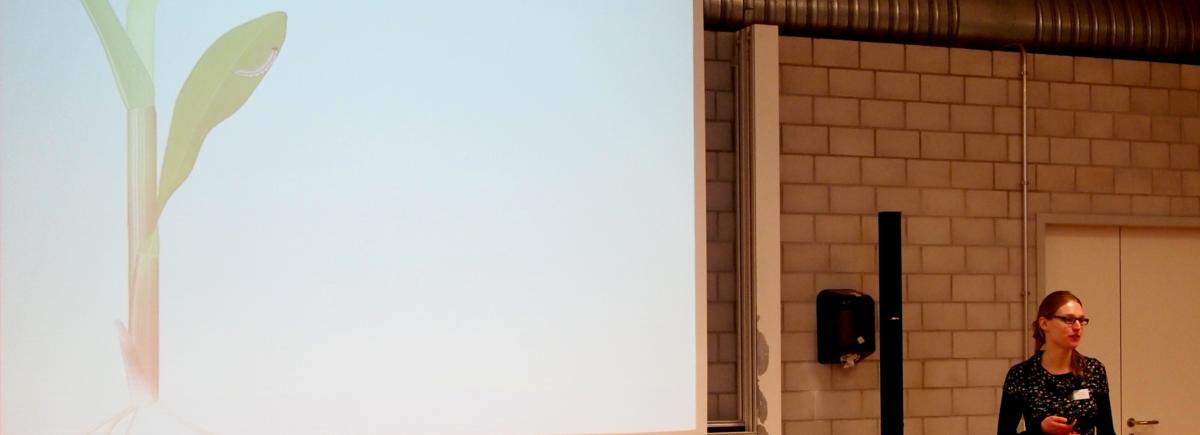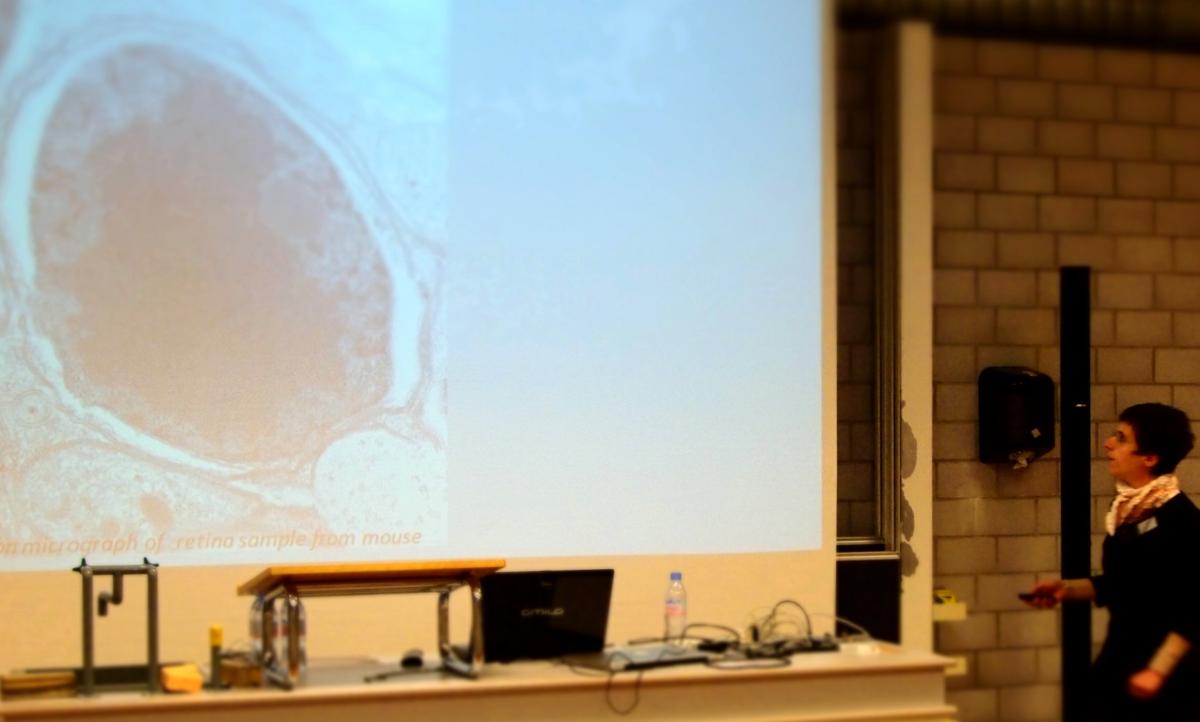Schedule
08:30 Registration and Posters pin up
09:00 Welcome
09:10 Professor Sophie Martin
“Cell polarization strategies for division and mate selection”
10:00 Meet your neighbors: selected talk from abstracts
Paris Jafari
“Deleterious effects of metabolites accumulating in methylmalonic aciduria and glutaric aciduria type I on competent rat 3D primary reaggregated brain”
10:20 Poster session (odd numbers) around coffee and croissants
11:00 Meet your neighbors: selected talk from abstracts
Sonia Domingos-Pereira
“Intravaginal TLR agonists increase local vaccine-specific CD8 T-cells and human papillomavirus-associated genital-tumor regression in mice”
11:20 Elvira de Lange
“Hidden struggles for survival: Plant-insect interaction above- and below-ground”
12:00 Lunch
13:00 Professor Michel Gilliet
“Sensing self-nucleic acids in skin immunity and auto immunity”
13:50 Meet your neighbors: selected talk from abstracts
Caroline Kizilyaprak
“Optimization of biological sample preparation for 3-D electron microscopy”
14:10 Meet your neighbors: selected talk from abstracts
Vincent Croset
“Molecular and neuronal organisation of Ionotropic Receptor (IR) taste pathways in Drosophila larva”
14:30 Coffee break and Poster session (even numbers)
15:20 Meet your neighbors: selected talk from abstracts
Emanuele Scacchi
“Positional Information by Differential Endocytosis Splits Auxin Response to Drive Arabidopsis Root Meristem Growth”
15:40 Dr. Mohamed Ali-Hakimi
“Toxoplasma parasites and subversion of the host cell microRNA pathway”
16:30 Presentation and Poster Awards
Keynote speakers
“Cell polarization strategies for division and mate selection” Professor Sophie Martin
Cell polarization is crucial for cell function both during development and in differentiated cells. We use the fission yeast Schizosaccharomyces pombe to uncover basic concepts in cell polarization, because it is a simple, yet relevant model system that affords powerful genetic, biochemical and live-cell imaging tools. Fission yeast cells proliferate by mitotic divisions, growing by polar extension and dividing by medial fission. I will present how the cell polarizes growth at its poles and monitors its length to ensure division occurs only once it has reached a sufficient size. Briefly, this relies on a geometry-sensing mechanism, where a signal – the protein kinase Pom1 – forms concentration gradients from the ends of the cells, which inhibits a sensor – the protein kinase Cdr2, itself an activator of mitotic entry – placed at the cell equator. Since Pom1 concentration at the cell middle is higher in short cells than in long cells, this suggests a model where Pom1 inhibits Cdr2 until the cell has reached a sufficient length. Fission yeast cells also reproduce sexually. To choose their mating partner, yeast cells secrete pheromones and respond by polarizing growth towards the pheromone source, for which the small GTPase Cdc42 is essential. I will describe a novel polarization strategy where a dynamic Cdc42 zone explores the cell periphery to orient growth for partner selection.
“Hidden struggles for survival: Plant-insect interaction above- and below-ground” Elvira de Lange
Insects account for at least 15% of the world’s crop losses, and although current pest control measures are quite effective, novel methods are needed for more sustainable ways to handle insect pests. Recent focus has been the strategies that plants themselves use to combat their enemies. Our group mainly works on chemical defense traits in maize.
Most studies on plant defenses focus on leaves, as they are relatively easy to study. Aboveground, a true struggle for survival is going on. In response to caterpillar feeding, maize shoots produce toxins like benzoxazinoids. In addition, the shoots emit herbivore-induced volatile organic compounds (VOCs). Parasitoid wasps use these VOCs to locate insect herbivores as hosts for their offspring. In a field study in Mexico, we assessed the importance of attracting parasitoid wasps for the survival of plants when under attack by larvae of the moth Spodoptera frugiperda, one of the main maize pests in the Americas.
Our group also studies such interactions belowground, where a similar struggle for survival takes place. In response to an attack by the root-feeding larvae of the beetle Diabrotica virgifera, maize roots emit VOCs that attract insect-killing nematodes. Interestingly, American maize varieties have lost the ability to release a key nematode attractant, making their roots much more vulnerable to Diabrotica damage. By transforming a deficient maize line with a gene from oregano, we succeeded in restoring the signal and enhancing the protection that nematodes provide to the roots. We are also in the process of developing capsules that contain nematodes to facilitate their application to the soil. The aim is to develop a biological control strategy with nematodes to combat Diabrotica, a pest that causes more than two billion dollars worth of damages every year.
“Sensing self-nucleic acids in skin immunity and auto immunity” Professor Michel Gilliet
During skin injury, small amounts of cationic antimicrobial peptides are transiently expressed to provide an efficient protection of the wounds from microbial invasion. These cationic antimicrobial peptides also form complexes with extracellular self-DNA and self-RNA released by dying cells. The self-nucleic acid-antimicrobial peptide complexes are highly protected from nuclease degradation and acquire the ability to enter into intracellular compartments of plasmacytoid dendritic cells (pDC), leading to the activation of TLR7 and TLR9 and the production of IFN-?. In accordance to the short-lived expression of cationic antimicrobial peptides, pDCs rapidly infiltrate skin wounds and are transiently activated to produce IFN-? via TLR7 and TLR9. This process is central for the induction of inflammatory responses and re-epithelization of the wounds. In psoriasis, cationic antimicrobial peptides are continuously overexpressed by keratinocytes leading to an excessive formation of self-nucleic acid complexes, chronic pDC activation and the development of skin autoimmunity. In systemic lupus erythematosus (SLE), self-DNA-antimicrobial peptide complexes are continuously released by neutrophils undergoing the process of neutrophil extracellular trap (NET) formation. This event is associated with the chronic activation of pDC in SLE and with the development of autoantibodies against both self-nucleic acids and antimicrobial peptides present in NETs.
“Toxoplasma parasites and subversion of the host cell microRNA pathway” Dr. Mohamed Ali-Hakimi
Toxoplasma gondii is the most widespread apicomplexan parasite, present virtually everywhere on earth. Although usually causing only mild symptoms in the adult, it can cause severe and life-threatening diseases in developing fetuses and in immune-compromised individuals, especially AIDS and transplant patients. Although the alterations of the host cell harboring Toxoplasma parasites have been extensively documented at the cellular level, still little is known about how the parasite manipulates the host cell at the molecular level. So far, most of the molecular work on the host-parasite interface has focused on the role of parasite factors that are secreted by the invading parasite into the host cell. Given the propensity of Toxoplasma to co-opt cellular pathways and activities for their benefit, it is perhaps not surprising that these parasites could also reshape their cellular environment by reprogramming the host’s RNA-interference (RNAi) machinery. RNA silencing plays a major role in innate antiviral and antibacterial defenses in plants, insects, and animals through the action of microRNAs (miRNAs). miRNAs can act in favor of the microorganism, either when it is pathogen-encoded or when the microorganism subverts host miRNAs to its benefit. Recent data point to the possibility that apicomplexan parasites have developed tactics to interfere with host miRNA populations in a parasite-specific manner, thereby identifying the RNA silencing pathway as a new means to reshape their cellular environment. Our recent data highlights the current understanding and new insights concerning the mechanisms that could be involved and the potential roles of the host microRNome in Toxoplasma infection.
Committee 2012
Stéphanie Corgnac (DB)
Brigida Rusconi (IMUR)
Sonia Domingos Pereira (URO)
Noemie Gardiol (Ludwig)
Damiano Cosmo del Vescovo (DPT)
Stéphanie Longet (IAL)
Christophe Chapard (DER)
Andreas Joosten (IRA)
Marta Bellone(LCH)
Omaya Dudin (DMF)
Melanie Julliand (DB)
Layane Hanna-El-Daher (BIO)
Rim Hojeij (URO)
Emilie Viau (LCH)





































